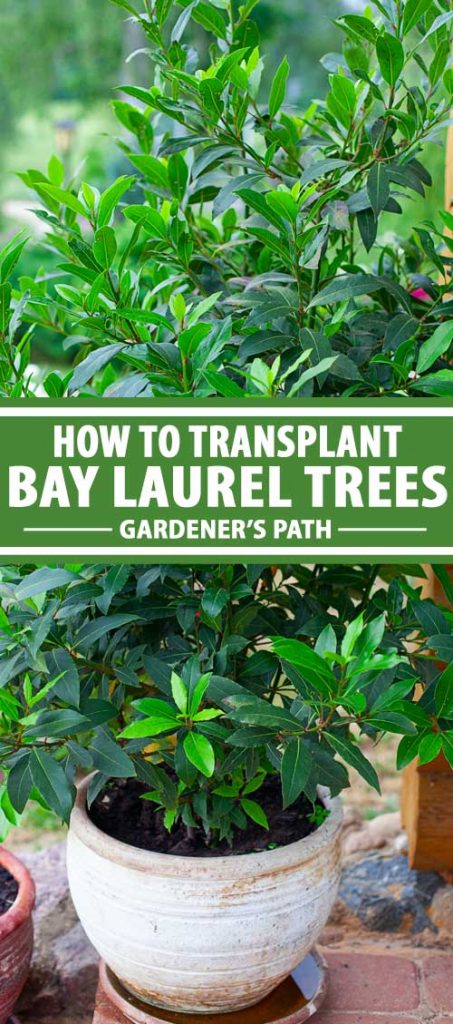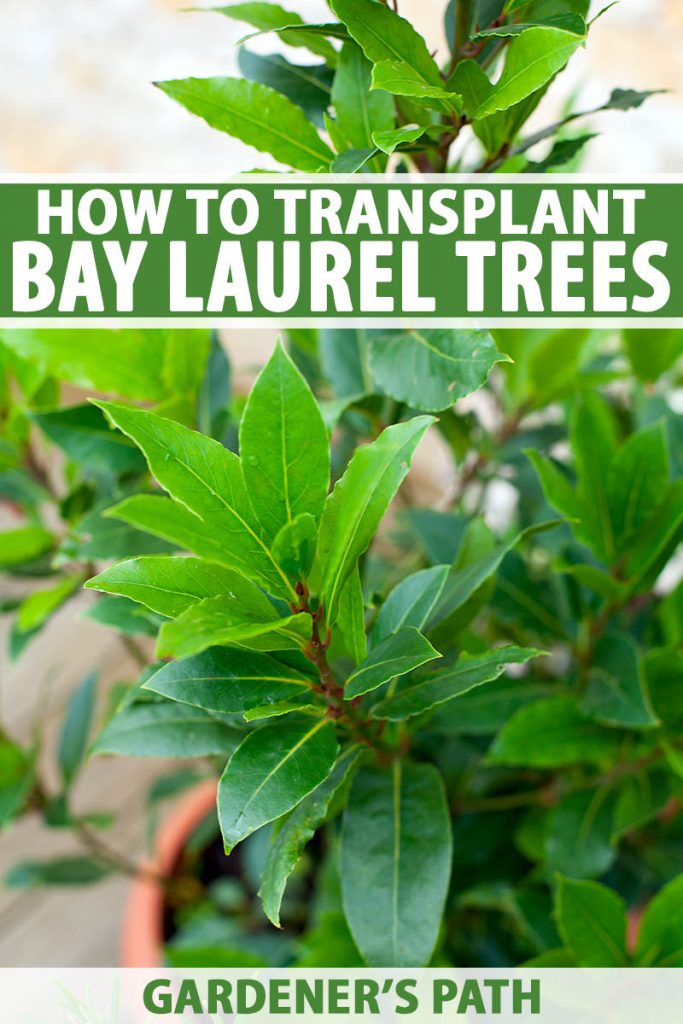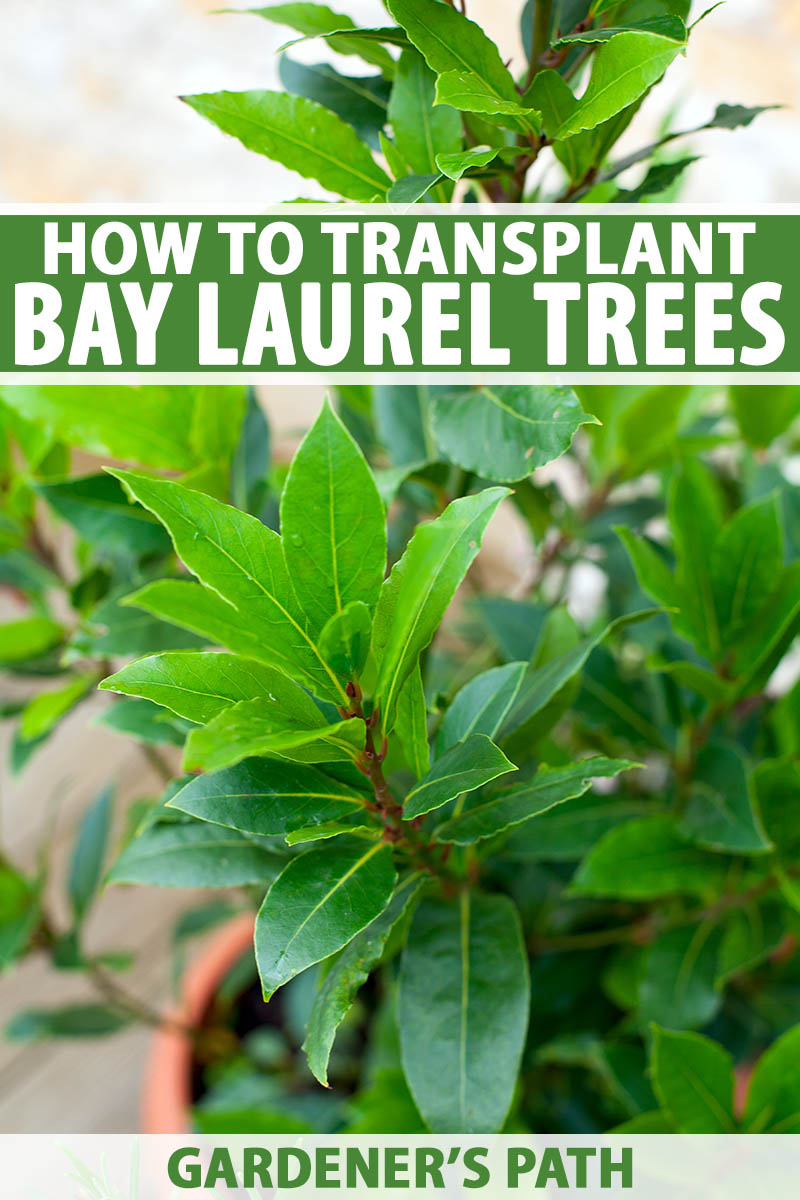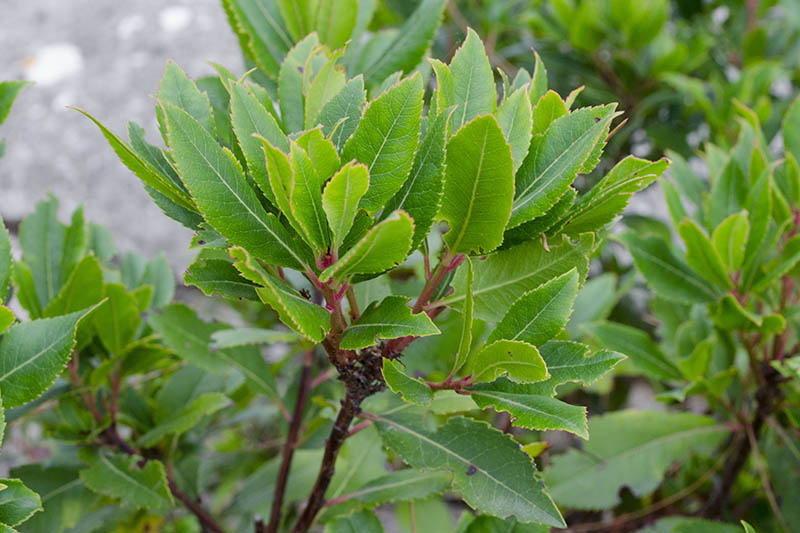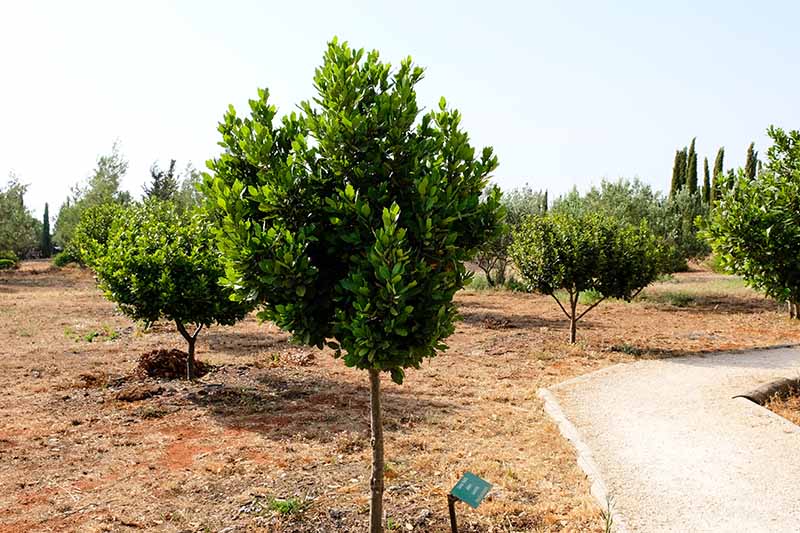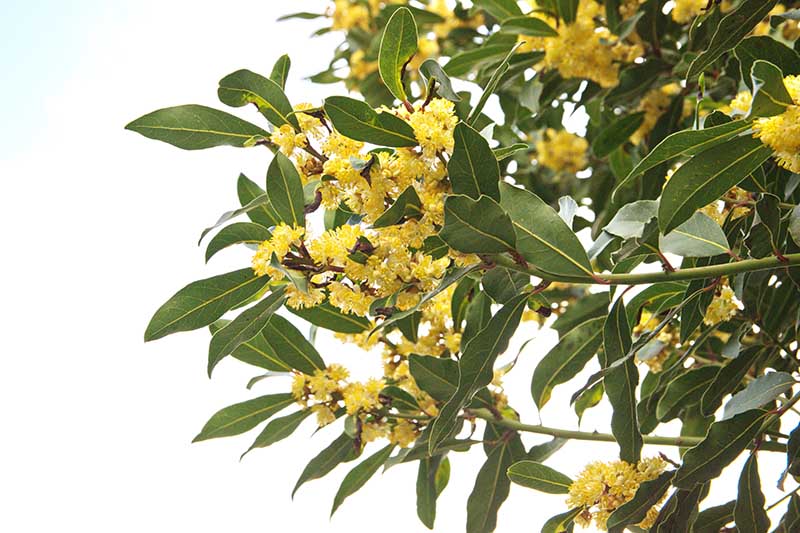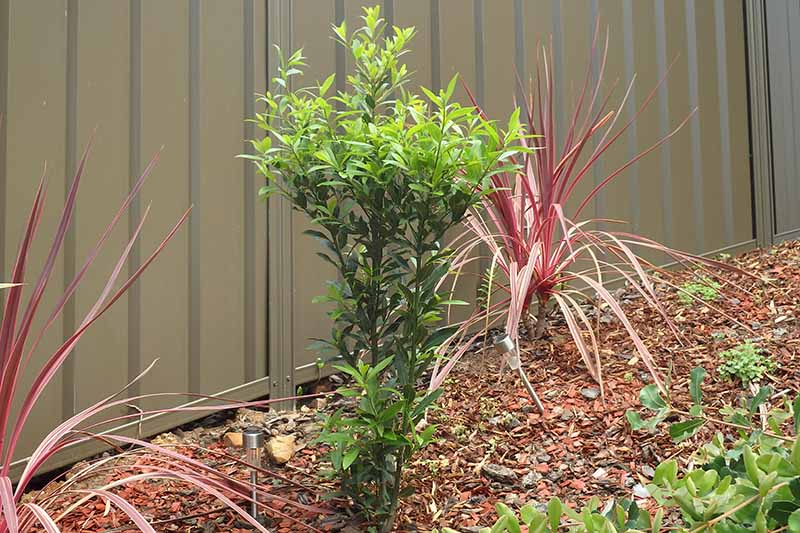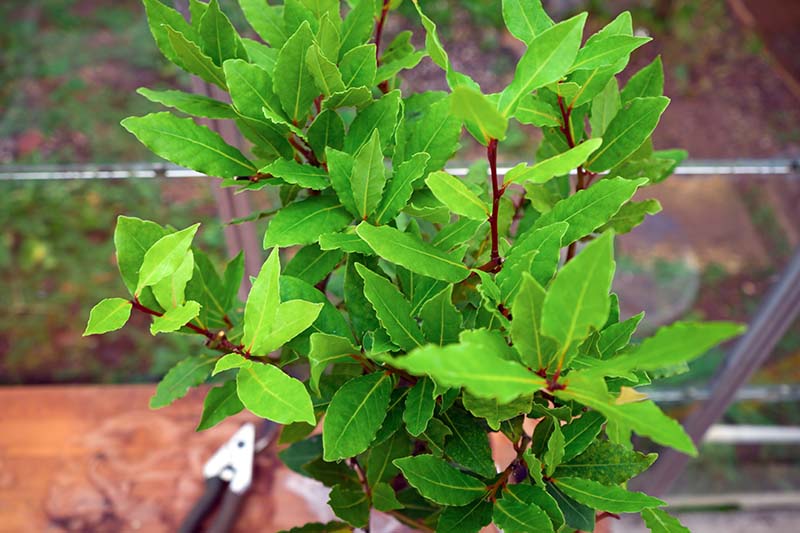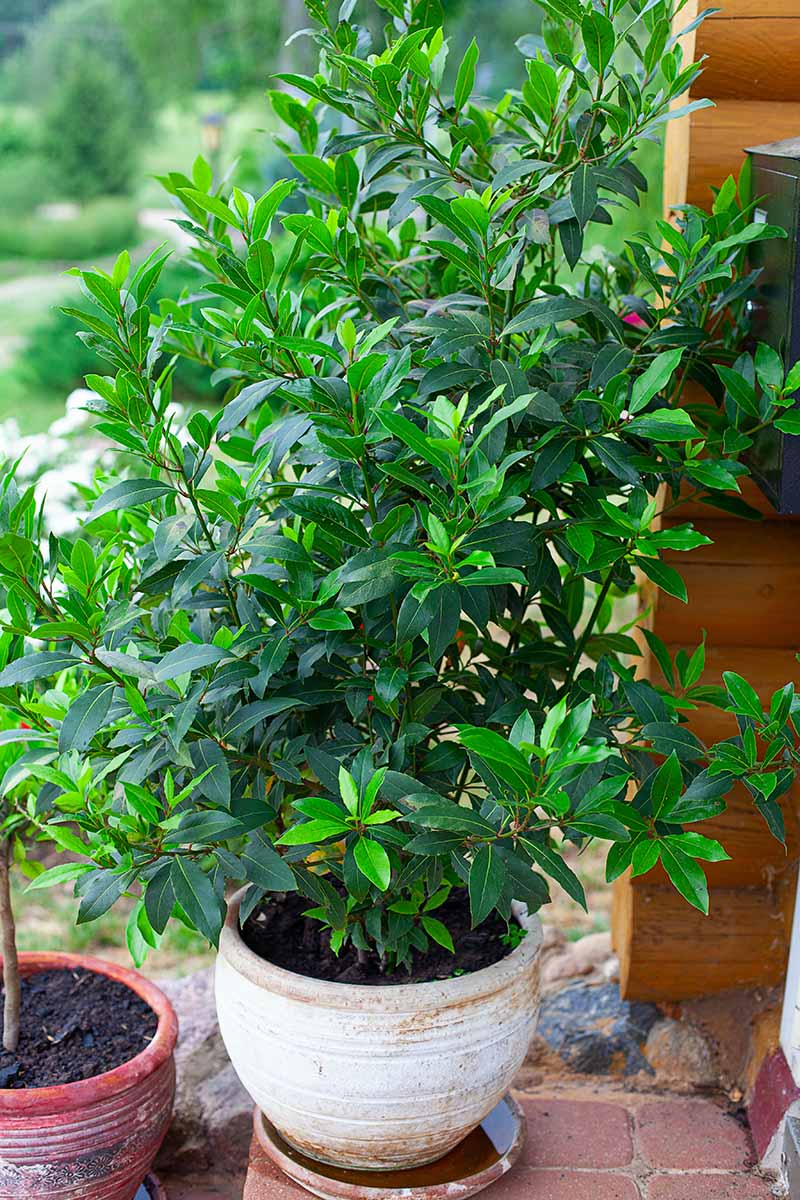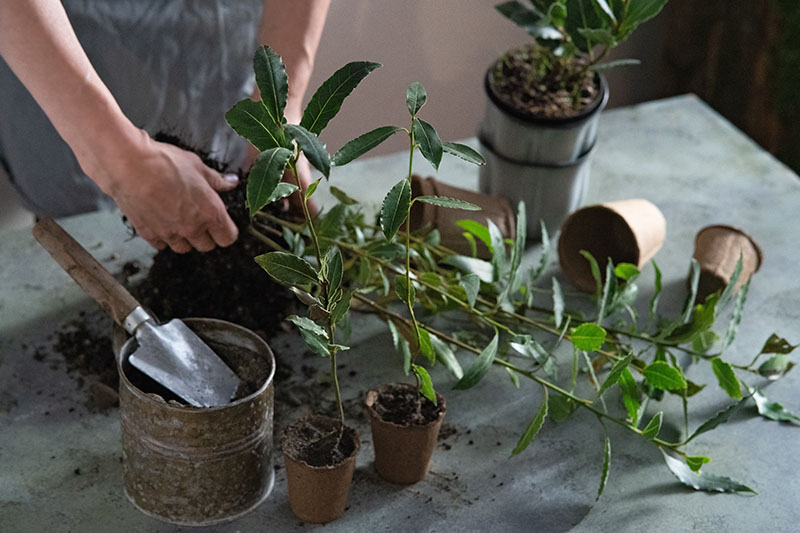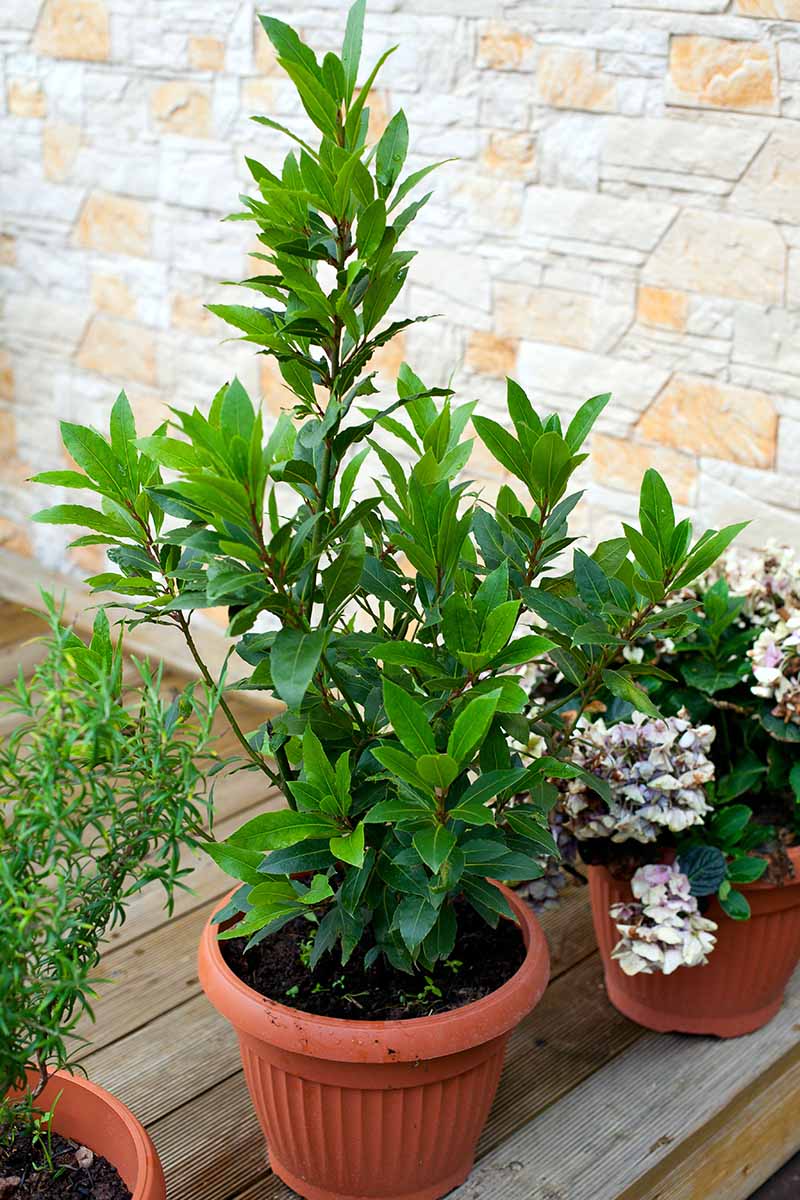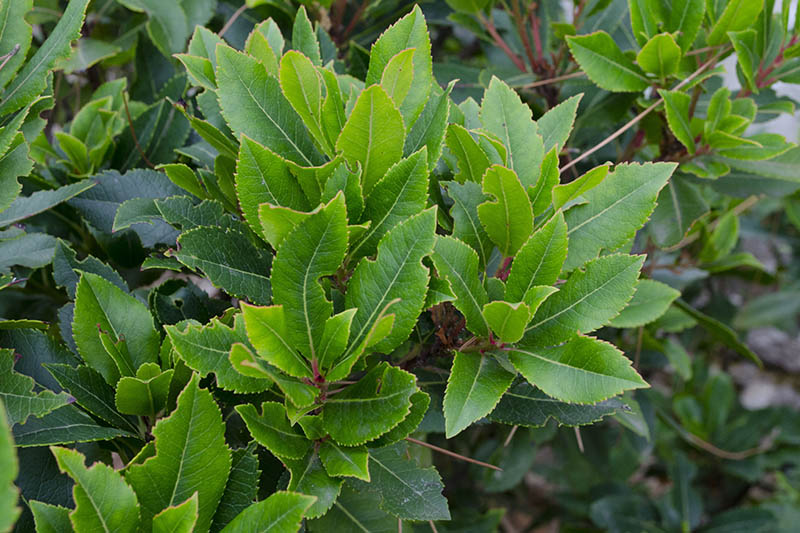Beyond adding evergreen ornamental interest to indoor and outdoor spaces with their glossy, deep green foliage, the leaves can bring an aromatic flavor to your cooking as well. Even if you don’t like the taste of bay leaves, the camphor-like scent when you brush past this plant is something to behold. If you are growing bay laurel, there may come a time when your tree is no longer thriving in its current location. Or it may have outgrown its current container, and could benefit from repotting. We link to vendors to help you find relevant products. If you buy from one of our links, we may earn a commission. Here’s what I’ll cover in this article: Get your spade handy, and let’s get ready to dig in.
Why Transplant Bay Laurel?
If your bay laurel is perfectly happy with the growing conditions in its current home, then why transplant it all? There are a variety of reasons, starting with the possibility that it may have outgrown its existing spot.
Whether you are growing it in a container or in the ground, you might reach a point where the plant needs more room to spread out. How can you tell if your L. nobilis requires transplanting? Determining the correct timing for transplanting a container-grown plant is easier to do than it may be for one that’s growing in the ground. You may see roots growing out of the drainage hole in the bottom of a pot, for example, or protruding from the surface of the soil. Noticing a few yellowing leaves during the course of the growing season is normal, but if your tree is stressed, more leaves than usual may turn yellow or brown, and fall off the plant. If it’s growing in the ground, your L. nobilis is generally fine to leave in place, unless it starts encroaching on other plants with its spread, or growing taller than you’d like. You might have an existing plant that you’d prefer to move to a new location – if you’re moving to a new house, or undertaking a landscaping project in your yard. Or perhaps you have a sapling that you’ve started from a cutting or have grown from seed.
In any of these cases, you don’t have to be afraid to dig it up and give it a new home, unless it is already particularly large. A massive bay tree isn’t a good candidate for transplanting. If the mature tree is over five feet tall, you will probably struggle to dig up the entirety of the extensive root system, and the plant may suffer transplant shock or die after replanting. In this case, you can dramatically trim back your plant instead of transplanting it. Bay trees are robust plants and can handle a serious pruning. You can remove up to half of the plant in the fall or early spring without any adverse effects. Learn more about how and when to prune bay laurel in this guide. (coming soon!)
When Is the Right Time?
If you have a plant emergency – construction, moving to a new house, and so on – it’s technically possible to transplant a bay laurel at any time of year. But if you want the greatest chance of success, fall or winter is the best time to move your plant, so long as you can work the soil. During the cooler months, plants are dormant. This means your bay laurel is not putting any of its energy into new growth, flowering, or setting seed, which gives it an opportunity to focus on recovery and root growth.
Cooler weather will also give your L. nobilis a better chance of avoiding transplant shock, and since the weather is usually wetter at this time of year, the roots aren’t typically threatened by drought and heat stress like they might be in the summertime. This, of course, depends on where you live, and the local climate and weather. You can also choose to transplant in early spring if you have to, but you run the risk of stunting the plant’s growth for the coming season. If you want to transplant in the spring, make sure you do it early enough – before new growth has started to appear – so that the plant has plenty of time to settle in and recover from the shock of being moved.
How to Transplant
The number one goal when you transplant should be to dig up as much of the root ball as possible. Bay roots are shallow, but they grow wide. You’ll need to dig out at least as wide as the plant’s foliage, or further if you notice that you’re hitting a lot of thick roots.
Dig down as far as you continue to see pencil-sized roots. For reference, at a minimum, the root ball should be at least 14 inches wide and 12 inches deep for a three-foot tree. It helps if your spade has been freshly sharpened so that it cuts through the roots cleanly. This allows them to heal more rapidly. Gently work the plant out of the soil by continually digging and tilting the plant slightly, using your spade to gently wedge it out of the soil. The finer feeder roots can be left behind if necessary, but it helps to gently pry them up with the rest of the root ball as you’re working if you can. If you are trying to leverage the root ball out and it is sticking in the ground, you can use a pair of shears to cut away any stubborn remaining roots if you are unable to dig them out. You want to be sure to replant as soon as possible after removing it from the ground. The biggest risk when you transplant your tree is that the roots may dry out before it is replanted, which could spell disaster.
If you can’t plant right away, wrap the root ball in burlap and keep it moist, in a shaded location. It’s a great idea to prepare the planting area before you start digging up your bay laurel, so you can loosen the soil first and dig a hole so the new location will be ready to go. But since you might not be able to guess exactly how big the root ball will be when you dig it up, a bit of additional digging may be required before you can settle the unearthed roots into place. Whether you’re moving your plant to a new container or a new place in the ground, you’ll need to ensure that the roots have enough room to spread out. If you are planting in the ground, this means digging a hole that is the same depth and twice as wide as the root ball of your existing plant. Before you place the plant into the hole, gently loosen the roots and spread them out a bit. None of the roots should be twisted together or tightly packed when they are replanted. Backfill with soil halfway, and add water. Stand back and make sure the tree is level. Fill the rest of the way and soak the plant with water once again. You want to give the plant about half a gallon of water for every square foot of soil surface that you have displaced. Make sure that the plant doesn’t sit any deeper than it was growing originally, or you run the risk of suffocating the roots. Don’t fertilize until mid-spring if you’ve transplanted in the fall or winter. If you transplanted any other time, wait a month or two until fertilizing your plant.
Repotting Container Bay
If you are growing your bay in a container, it’s time to transplant when you can see roots growing out of the base, or if you remove the plant from its container and you can see that the roots are growing around in a circle along the inside of the container wall.
If you’re growing it in a clay or terra cotta container, it’s also time to repot if the clay seems to be drying out quickly, and you have to water more frequently. Don’t transplant into a much larger container unless you want your plant to grow bigger quickly. If you want to keep it to a more manageable size, use a container that is just a few inches larger than the one it was growing in before.
To remove the plant from its original container, tilt the pot and grasp the plant firmly around the stem as close to the base as you can. Roll the container back and forth as you gently pull. It can help to do this when the soil is slightly dry, since potting soil expands when it’s wet. When you have removed your plant from its pot, gently loosen the root ball with your hands, and prune away any dead roots. Fill the new pot with enough soil that the bay laurel will be sitting at the same height it was in its previous container. Place the plant in its new container, and backfill around the edges with potting soil. Now is the time to give it a good soaking. Don’t fertilize for the first two to three months, after which you can resume your regular fertilizing schedule.
How to Deal with Transplant Shock
Transplant shock happens when your newly replanted bay isn’t happy about the big move, and fails to thrive. This can result from disturbing the roots, or if the plant was given a heavy pruning before digging it up. You shouldn’t give your bay tree a heavy pruning three months before and after transplanting.
Plants are more likely to experience shock when the weather is extremely dry or hot, which is why it’s recommended to transplant during the cooler months. Larger plants tend to suffer more than smaller ones. If your plant starts to droop or drop its leaves shortly after replanting, don’t panic. Your plant is going to need a little babying for a while, but it will probably be fine. To begin with, give it a little more water than you normally would. When a plant loses some of its root system, it can’t take up as much water as it did before, so you will need to help it out. Ensure that the soil is well-draining, so it is not sitting in standing water either. You can also apply two inches of organic mulch such as leaf mold, wood chips, or straw. This helps to protect the roots from heat and aids moisture retention in the soil. Don’t place mulch up against the stem at the base of the tree – leave a one- to two-inch gap around the trunk.
It’s Time for the Big Move
It’s not so complicated, right? Fortunately, bay trees are fairly forgiving. Even if you don’t do everything perfectly, it will likely survive the move if you give it a little extra care and attention, and exercise some patience.
The most important things to remember are to keep as much of the root ball intact as possible, and keep the roots moist. After your bay is transplanted, let me know how it went in the comments below! I always love to hear about your experiences. And for more information about growing herbs in your garden, check out these guides next:
Grow Common Sage, a Mediterranean Culinary Staple How to Plant and Grow Marjoram in Your Herb Garden How to Grow Oregano
© Ask the Experts, LLC. ALL RIGHTS RESERVED. See our TOS for more details. Uncredited photos: Shutterstock.
